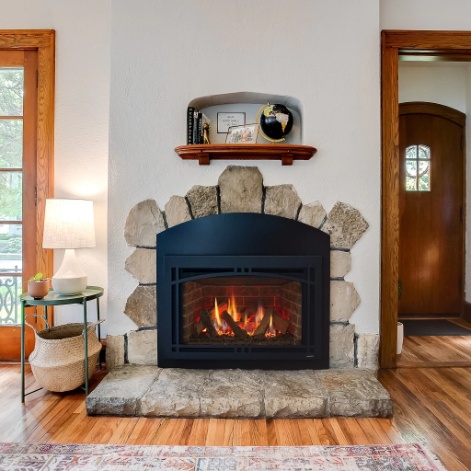Table of Contents
Wood garage doors are a timeless and elegant choice for your home. They offer natural beauty and a range of benefits, making them popular among homeowners. In this article, we will explore the various aspects of wood garage doors, including their benefits, pricing factors, and average costs.
We will delve into the aesthetics, durability, insulation, customization options, and pricing factors such as the type of wood, size and style, insulation and energy efficiency, hardware and accessories, and installation costs. We will also uncover the average cost of wood garage doors and discuss the factors that can affect their price, such as location, customization, maintenance costs, and additional features.
If you are considering wood garage doors for your home, this article will provide you with valuable insights to make an informed decision.
Key Takeaways:
- Wood garage doors offer both beauty and durability, making them a great investment for your home.
- The price of wood garage doors can vary based on factors such as type of wood, size, insulation, and installation costs.
- Be sure to consider location, customization, maintenance, and additional features when budgeting for wood garage doors.
What Are Wood Garage Doors?
Wood garage doors are an essential element of residential and commercial properties, providing security, aesthetic appeal, and functional convenience for property owners.
The natural beauty of wood garage doors adds a touch of elegance to the property’s exterior, enhancing its curb appeal and overall value. In addition to the visual appeal, these doors offer robust protection against harsh weather conditions, intruders, and unwanted noise, ensuring a safe and tranquil environment for occupants.
The insulating properties of wood garage doors regulate temperature, contributing to energy efficiency and cost savings. Their versatility allows for customization to suit diverse architectural styles and personal preferences, making them a perfect choice for property owners seeking both functionality and visual appeal.
What Are the Benefits of Wood Garage Doors?
Wood garage doors offer a myriad of benefits for both residential and commercial properties, enhancing the aesthetics, security, and property value while satisfying the discerning tastes of customers and businesses alike.
Aesthetics
The aesthetic appeal of wood garage doors adds a touch of elegance and charm to any property, complementing various architectural designs and enhancing curb appeal.
Wood garage doors offer a wide range of design options, from traditional carriage house styles to modern sleek finishes, catering to diverse property aesthetics. The natural grain and texture of wood bring warmth and character, elevating the visual impact of the exterior. Whether stained to highlight the natural beauty of the wood or painted to complement the property’s color palette, wood garage doors create an inviting and sophisticated look that contributes to the overall charm and allure of the property.
Durability
Wood garage doors are renowned for their durability and robust construction, requiring minimal maintenance while utilizing high-quality materials for long-lasting performance.
The choice of materials, such as cedar, redwood, or hemlock, contributes significantly to the longevity of wood garage doors. The construction involves precise joinery and expert craftsmanship, ensuring structural integrity and resistance to environmental elements. To maintain their luster and strength, regular inspections for moisture damage, refinishing every few years, and protecting the wood from direct sunlight and moisture are essential. These steps play a vital role in preserving the natural beauty and strength of wood garage doors for years to come.
Insulation
Wood garage doors provide effective insulation, contributing to enhanced energy efficiency and comfort within the property, regulating indoor temperatures and reducing energy costs.
By incorporating high-quality insulation materials, wood garage doors act as a barrier against the outdoor elements, preventing heat loss in the winter and heat gain in the summer, thus minimizing the energy consumption of heating and cooling systems. This leads to a more consistent and pleasant indoor environment, reducing the reliance on HVAC systems and translating into substantial cost savings over time.
Customization Options
Wood garage doors offer extensive customization options, allowing customers to personalize the design, finish, and details to align with their unique preferences and architectural styles.
From traditional to contemporary, these customizable wood garage doors can be tailored to complement any home exterior. Customers have the freedom to choose the wood species, such as cedar, mahogany, or oak, and select from a variety of finishes, including natural stains or painted options.
The design flexibility extends to hardware and decorative elements, enabling homeowners to create a door that reflects their individual taste and enhances the curb appeal of their property. With the option to add windows, custom panel designs, and unique architectural details, wood garage doors offer unmatched personalization possibilities.
How Are Wood Garage Doors Priced?
The pricing of wood garage doors encompasses factors such as material choice, installation requirements, and additional features, influencing the overall costs for property owners and businesses.
When considering wood garage doors, the material choice significantly affects the pricing. Hardwood garage doors are generally more expensive than softwood options. Installation requirements play a crucial role in the overall costs, especially if custom fittings or specialized hardware are needed. The inclusion of additional features, such as insulation, windows, or decorative hardware, can also impact the pricing of wood garage doors. Therefore, property owners and businesses should carefully evaluate these factors to make informed decisions about pricing considerations.
Type of Wood
The type of wood selected for garage doors significantly influences the pricing and construction process, with options such as faux wood and Alaskan Cedar offering distinctive qualities and price points.
When considering the material options for garage doors, it’s important to weigh the pros and cons of each wood type.
Faux wood, also known as composite wood, provides an authentic wood appearance with minimal maintenance, making it an attractive option for homeowners looking for a durable and cost-effective choice.
On the other hand, Alaskan Cedar boasts natural resistance to decay and insects, making it a popular choice for those seeking long-term durability and a timeless aesthetic for their garage doors.
Construction considerations also play a vital role in the overall pricing and quality of wooden garage doors. Factors such as the design complexity, insulation requirements, and hardware selection can significantly impact the construction process and overall cost.
These considerations are especially important when working with premium wood types like Spanish Cedar or Mahogany, as their higher price points necessitate meticulous construction to maximize their beauty and functionality.
Price differentials among wood types highlight the need for careful consideration when selecting materials for garage door construction. While budget-friendly options like Redwood and Fir can provide a classic and durable finish, exotic woods such as Teak and Black Locust are revered for their unique grain patterns and exceptional resilience, often commanding higher price tags.
Understanding the trade-offs between cost, durability, and aesthetic appeal is crucial for homeowners seeking the perfect balance when investing in wooden garage doors.
Size and Style
The size and style preferences for wood garage doors play a pivotal role in determining the pricing, with varying dimensions and design elements affecting the overall costs and installation requirements.
When considering the design variations, intricate patterns and customized detailing often result in higher prices due to the additional labor and craftsmanship involved. Larger sizes not only require more materials but also impact the structural requirements, leading to adjustments in pricing and installation complexity.
The style of the wood garage doors, such as traditional, contemporary, or carriage house designs, can also influence the pricing, as certain styles may involve specialized manufacturing techniques or unique hardware components.
Insulation and Energy Efficiency
The inclusion of insulation features in wood garage doors contributes to energy efficiency and comfort, influencing the pricing based on the insulation quality and its impact on long-term energy costs.
Insulation in garage doors not only helps in maintaining a moderate temperature inside the garage but also minimizes the transfer of heat and cold between the indoors and outdoors. This leads to reduced energy consumption for heating or cooling, thereby lowering long-term energy costs. Energy-efficient properties of well-insulated garage doors can also contribute to potential savings on utility bills.
Hardware and Accessories
The selection of hardware and accessories for wood garage doors contributes to the pricing variation, with customization options, security features, and installation requirements impacting the overall costs.
When selecting hardware and accessories for wood garage doors, various factors come into play. Customization choices such as decorative handles, window inserts, and insulation options can significantly influence the pricing. Integrating advanced security features, such as smart locks and motion sensors, can add to the overall costs. Another critical aspect is installation considerations; professional installation service may incur additional expenses, but it ensures proper functionality and durability of the garage door hardware and accessories.
Installation Costs
The installation costs for wood garage doors depend on factors such as labor, property specifications, and customization requirements.
Labor expenses play a significant role in the installation costs, as skilled professionals are required to ensure the proper fitting and functioning of the wood garage doors. Property-specific considerations, such as the size and structural layout of the garage, can impact the installation process and, consequently, the overall costs.
Customization requirements, such as unique designs or specialized hardware, can add to the installation expenses, as they often require additional materials and labor. Taking all these factors into account is essential for property owners to make informed decisions regarding their garage door installations.
What Is the Average Cost of Wood Garage Doors?
The average cost of wood garage doors varies based on property size, design preferences, and material selections, providing property owners and customers with diverse pricing options for their specific needs.
Property size is a significant factor in determining the cost of wood garage doors. Larger properties may require bigger doors, resulting in higher costs. Design preferences also play a crucial role, as custom designs or intricate detailing can increase the overall price.
Material selections, such as high-quality wood or specialized finishes, can contribute to variations in cost. Customers should carefully consider these factors and consult with experts to ensure their garage door choice aligns with both their aesthetic preferences and budget.
What Factors Can Affect the Price of Wood Garage Doors?
Location, customization, maintenance costs, and additional features influence the pricing of wood garage doors. These factors present property owners and businesses with various considerations for their investment decisions.
Regional factors such as demand, availability of materials, and local economic conditions affect the cost of wood garage doors in different locations. The choice of wood type, design, and size in customization options plays a significant role in determining the final price. Certain wood species require more frequent upkeep, influencing maintenance costs. Features like insulation, windows, or advanced security mechanisms further impact the overall pricing of wood garage doors.
Location
The geographical location of a property significantly impacts the pricing of wood garage doors. Regional variations in labor costs, materials availability, and installation requirements shape the overall investment.
Geographical location plays a crucial role in determining the cost of wood garage doors. In suburban areas, lower labor costs might lead to lower overall pricing of garage doors compared to urban locations. Regions with abundant wood resources may have lower material costs. In contrast, areas with limited availability might experience higher prices.
Labor considerations also influence pricing. In rural areas, more readily available and lower-cost labor could reduce installation expenses for wood garage doors. In metropolitan areas, higher labor costs generally elevate the overall pricing of garage doors to account for these expenses.
Customization
Customization choices for wood garage doors influence pricing. Unique design features, finish options, and personalized details add value and expenses for property owners.
The ability to customize wood garage doors gives homeowners the freedom to create a unique look for their property. Choosing custom features like intricate panel designs, decorative hardware, or specialty windows elevates the aesthetic appeal of their garage doors.
Customization significantly impacts pricing. Added design enhancements and personalized details improve the appearance and functionality of garage doors. However, they also contribute to the overall cost.
Maintenance Costs
The maintenance costs of wood garage doors contribute to overall pricing considerations. Durable materials and minimal upkeep requirements present long-term cost advantages for property owners.
Homeowners often choose wood garage doors for their natural aesthetic and timeless appeal. However, they should carefully evaluate the maintenance costs and durability.
Wood is known for its strength and resilience. This makes it a sturdy and reliable option for garage doors.
Wood garage doors may require occasional refinishing or repainting to maintain their appearance. The minimal upkeep requirements, compared to other materials, can result in cost savings over time. The long-term cost benefits of wood garage doors are evident in their durability. They withstand various weather conditions and retain their appeal for years to come.
Additional Features
Additional features like security enhancements, automation options, and aesthetic upgrades impact the pricing of wood garage doors. These features provide property owners with diverse pricing considerations.
Enhanced security features elevate the overall price point of the garage doors. Features like reinforced locking mechanisms and advanced access control systems reassure homeowners of their property’s safety.
Automation choices contribute to the convenience and accessibility of the garage door. Smart opening mechanisms and remote control integration offer a value-added proposition that justifies a higher price range.
Aesthetic upgrades add elegance to the garage doors. Custom finishes and architectural embellishments elevate their visual appeal and increase their perceived market value.
Frequently Asked Questions
1. What makes wood garage doors a natural beauty at great prices?
Wood garage doors are made from natural materials, giving them a beautiful and timeless appearance. Additionally, compared to other materials, wood garage doors are often more affordable, making them a great option for those on a budget.
2. Are wood garage doors durable?
Yes, wood garage doors can be incredibly durable if properly maintained. Wood is a strong and sturdy material, and when treated and sealed correctly, it can withstand harsh weather conditions and last for many years.
3. Are there different wood options for garage doors?
Yes, there are various types of wood that can be used for garage doors, including cedar, redwood, mahogany, and more. Each type of wood has its unique characteristics, so you can choose one that best fits your aesthetic and budget.
4. Can wood garage doors be customized?
Absolutely! Wood garage doors can be easily customized to fit your specific needs and preferences. You can choose from a variety of styles, finishes, and hardware options to create a unique and personalized look for your garage.
5. How does the pricing of wood garage doors compare to other materials?
Generally, wood garage doors are more affordable compared to other materials such as steel or aluminum. However, the exact pricing will depend on the type of wood, style, and size of the door you choose.
6. Is professional installation necessary for wood garage doors?
While DIY installation may seem like a cost-effective option, it is highly recommended to hire a professional for the installation of wood garage doors. This ensures that the door is properly installed to avoid any potential damage or safety hazards. Contact Dreifuss Fireplaces (& Doors) today to install your woof garage door!
Latest Articles

What Is An NG (Natural Gas) Indicator And Why You Need It For Your Fireplace
Table of Contents1 Understanding Natural Gas Fireplaces2 What is an NG Indicator?3 Importance of NG Indicators for Safety4 Types of NG Indicators5 Installation and Maintenance of NG Indicators6 Signs of a Faulty NG Indicator7 Frequently Asked Questions Natural gas fireplaces are a favored option among numerous homeowners due to their convenience and effectiveness. But, what is an NG (Natural Gas) indicator and why you need it for your fireplace? It is imperative to comprehend how they function and the significance of having an NG (Natural Gas) indicator for safety purposes. This article delves into the definition and significance of NG indicators. We will discuss the potential hazards associated with the absence of one and the various types of indicators accessible. Also, we will discuss installation and maintenance recommendations, and methods to recognize and rectify issues with malfunctioning indicators. Stay well-informed and ensure the safety of your home by referring to this exhaustive guide. Understanding Natural Gas Fireplaces Natural gas fireplaces serve as an efficient and convenient heating option for numerous households. They utilize natural gas as a fuel source to deliver consistent warmth and ambiance. How They Work and Why They Need NG Indicators The operation of natural gas fireplaces involves igniting natural gas to generate heat. This process requires diligent monitoring to ensure both safety and efficiency, a task facilitated by the use of NG indicators. NG indicators play a critical role in detecting potential gas leaks. They enable residents to promptly address and mitigate any associated hazards. Through continuous monitoring of gas levels and providing timely warnings and alerts, NG indicators uphold a secure indoor environment. It is imperative to ensure that these indicators function properly to facilitate the effective operation of natural gas fireplaces. This helps mitigate the inherent risks linked to gas leaks. What is an NG Indicator? An NG indicator is a specialized device equipped with advanced sensors and technology. It is specifically designed to detect natural gas leaks and monitor gas pressure in appliances, such as fireplaces. Definition and Purpose The NG indicator functions as a detector that monitors gas appliances for potential leaks. It provides essential functionality to ensure safety in households utilizing natural gas. These detectors play a crucial role in protecting residences by notifying occupants of dangerous gas leaks long before they escalate into perilous situations. Through continuous monitoring of gas levels in the vicinity, NG indicators offer an additional layer of protection. This is particularly important in properties that rely on gas-operated fireplaces or stoves. These devices not only help avert potential disasters but also enhance the overall peace of mind of homeowners. They assure them that their living spaces are equipped with reliable safety features. Importance of NG Indicators for Safety Natural gas indicators are essential for maintaining safety in households equipped with natural gas appliances. These devices serve as a proactive measure to promptly detect gas leaks. This offers homeowners a sense of security and assurance. Potential Dangers of Not Having an NG Indicator The absence of an NG indicator in residences equipped with natural gas appliances can pose significant hazards. This includes the risk of undetected gas leaks , carbon monoxide poisoning , and pilot outages that may lead to dangerous situations. These potential risks can profoundly impact indoor air quality. They directly influence the health and safety of individuals residing in the household. Undetected gas leaks can go unnoticed, gradually permeating the air and creating a potentially explosive environment. Insufficient ventilation from undetected exposure to carbon monoxide can lead to serious health complications. These range from mild symptoms such as dizziness to fatal poisoning. Without proper monitoring from an NG indicator, families are left susceptible to these concealed threats. This underscores the critical importance of implementing proactive measures to mitigate such risks. Types of NG Indicators Indicators for Natural Gas (NG) are available in diverse types. Each presents distinct detection capabilities tailored to specific requirements, encompassing both manual and automated alternatives. Manual vs. Automatic Indicators Manual NG indicators require user intervention for monitoring gas levels and identifying leaks. On the other hand, automatic indicators employ sophisticated technology to deliver continuous, real-time monitoring. This heightened efficiency and oversight enhance safety protocols. Conventional manual indicators rely on individuals to physically inspect and evaluate gas levels periodically. This renders them more susceptible to human errors. Conversely, automatic indicators feature sensors capable of promptly detecting even the most minute fluctuations in gas levels. This establishes a more dependable and precise monitoring mechanism. Automatic indicators can activate alerts and shut-off systems upon detecting a leak. This ensures immediate action to avert potential hazards. This advanced technology enhances safety protocols and instills a sense of command and assurance among users. Installation and Maintenance of NG Indicators The reliable and accurate performance of NG indicators necessitates proper installation and consistent maintenance. This often entails professional installation and adherence to recommended service guidelines. Proper Installation and Regular Maintenance Tips The proper installation of NG indicators involves adhering to the specifications in the user manual. Maintenance protocols entail strict adherence to a predetermined maintenance schedule to ensure sustained operational efficiency. During the installation phase, it is imperative to verify that the NG indicators are securely affixed in the designated location as stipulated by the manufacturer. Crucial steps include confirming power source compatibility and ensuring proper grounding of the device to optimize performance. Calibration of the indicator must be executed meticulously to ensure precise readings. Regarding maintenance, essential practices include regular inspection for signs of wear, thorough cleaning of the indicator components, and routine functionality tests. By allocating time to a consistent maintenance regimen, the NG indicator can operate with optimal efficiency over an extended duration. Signs of a Faulty NG Indicator Recognizing indicators of a malfunctioning NG indicator is essential for upholding safety and performance standards. Inaccuracies and detection issues can undermine the efficacy of these devices. Identifying and Addressing Issues The process of identifying and addressing issues related to NG (natural gas) indicators requires a systematic troubleshooting approach. This ensures their optimal performance

What You Need To Know About Gas Log Set Safety And Installation Considerations
Table of Contents1 Understanding Gas Log Sets2 Safety Considerations for Gas Log Sets3 Installation Guidelines for Gas Log Sets4 Maintaining and Troubleshooting Gas Log Sets5 Frequently Asked Questions Gas log sets are a favored option among homeowners seeking to enjoy the comfort and atmosphere of a conventional fireplace without the inconvenience of wood. This article tells you what you need to know about gas log set safety and installation considerations. Before incorporating one into your residence, it is imperative to understand the safety considerations associated with their use. This discussion delves into the potential hazards linked with gas log sets. It presents crucial precautions to uphold the safety of your home. Also, it outlines proper installation procedures and offers insight into common errors to avoid. Finally, it provides advice on maintenance and troubleshooting. Gain comprehensive knowledge on gas log set safety and installation considerations. Understanding Gas Log Sets Comprehending gas log sets is essential for individuals seeking to elevate their fireplace experience, and for gas lag set safety and installation. These heating appliances can operate on either natural gas or propane. In addition, they are available in a range of styles, including vented, ventless, and vent-free options. They provide an array of benefits and customization opportunities through various fireplace accessories. What are Gas Log Sets? Gas log sets are meticulously crafted artificial logs. They are designed to imitate the appearance and functionality of authentic wood logs within fireplaces. These gas log sets typically consist of ceramic or refractory concrete logs that have been skillfully molded and painted. This allows them to replicate the natural grain and texture of real wood. The logs are arranged in various configurations within the fireplace. They establish a realistic and welcoming ambiance. In addition to the logs, gas log sets often include fireplace accessories such as glowing embers. Accessories also include decorative stones, and even pine cones to enhance the overall aesthetic appeal. Homeowners can select from an array of placement options. These include traditional wood stack, cascading driftwood, or a contemporary geometric arrangement. Homeowners can align their preferred style and design preferences. Safety Considerations for Gas Log Sets Safety considerations for gas log sets are of utmost importance to guarantee a secure and pleasant fireplace experience. It is essential to address potential hazards such as carbon monoxide exposure, gas leaks, and fire safety to maintain a safe environment for homeowners. Potential Hazards and Precautions Gas log sets come with potential hazards that must be taken seriously, including the risks of gas leaks, carbon monoxide poisoning, and fire incidents. It is imperative to establish and adhere to rigorous safety measures to ensure the well-being of individuals and properties involved in the use of gas log sets. Gas leaks represent a significant hazard when utilizing gas log sets. They can result in the accumulation of combustible gas within the premises, heightening the possibility of explosions or fires. Carbon monoxide, an insidious gas generated during incomplete combustion, poses a grave threat due to its colorless and odorless nature, making it undetectable without proper monitoring. To address these risks effectively, it is vital to install carbon monoxide detectors and gas leak sensors in the vicinity of the gas logs. Routine maintenance checks on the gas log system, including cleaning and inspection procedures, are critical to ensure safe operations and the prompt identification of potential issues. In case of a gas leak or suspected presence of carbon monoxide, immediate evacuation of the affected area is paramount, followed by prompt contact with emergency services. Recognizing the distinct odor of rotten eggs associated with natural gas can serve as an early warning sign, prompting swift actions to avert any potential accidents. Installation Guidelines for Gas Log Sets The installation of a gas log set necessitates meticulous planning and strict adherence to specific guidelines. This includes verifying a secure gas connection, ensuring proper gas lines are in place, and complying with local building codes. Often, the complexity of these requirements may require the expertise of a certified technician. Proper Installation Techniques The appropriate installation procedures for gas log sets involve the secure connection of gas lines, meticulous adherence to installation manuals, and strict compliance with local building codes. It is imperative to prioritize the guarantee of secure gas connections to avert leaks and potential safety hazards. During the installation of gas log sets, utilizing suitable sealants and fittings is essential to establish a tightly sealed connection. The correct installation of gas lines is critical for both the safety and operational efficacy of the gas log set. Reference to the installation manual is highly advisable for detailed, step-by-step guidance to prevent inaccuracies and ensure the successful establishment of the gas log set. Consistently adhering to building codes and regulations upholds safety standards. Seeking guidance and confirmation from a certified technician before and after installation can offer invaluable support and assurance throughout the process. Common Installation Mistakes to Avoid It is imperative to avoid common installation errors to ensure the secure and effective operation of gas log sets. This includes verifying proper gas connections and compliance with building codes. Improper gas connections can result in leaks and potential hazards, underscoring the importance of verifying the tightness and correct alignment of all fittings. Failure to adhere to building codes can lead to structural complications, penalties for non-compliance, or even safety concerns. To prevent these oversights, it is advised to consult the manufacturer’s installation guidelines and strictly adhere to local regulations. Engaging a certified technician for the installation of gas log sets guarantees that the procedure is carried out accurately and securely. This provides assurance that the system is functioning as intended. Maintaining and Troubleshooting Gas Log Sets Regular maintenance and troubleshooting of gas log sets are imperative to uphold their optimal performance and safety. This includes thorough examination of the pilot light, pilot assembly, and other gas appliances to preserve heating efficiency and promptly resolve any arising issues. Tips for Maintenance and Repair Ensuring the proper maintenance of your gas log set necessitates conducting

Key Considerations For Using Compressed Liquid Propane In Fireplace Installation
Table of Contents1 What is Compressed Liquid Propane?2 Benefits of Using Compressed Liquid Propane in Fireplaces3 Safety Precautions for Installing Compressed Liquid Propane Fireplaces4 Installation Process for Compressed Liquid Propane Fireplaces5 Maintenance and Care for Compressed Liquid Propane Fireplaces6 Alternative Fuel Options for Fireplaces7 Frequently Asked Questions If you are contemplating the use of compressed liquid propane in your fireplace installation, this discussion will delve into the advantages of adopting this alternative fuel option. These benefits include enhanced efficiency, cost savings, and important safety precautions to consider. Furthermore, a detailed step-by-step guide on the installation process will be provided, along with recommendations for maintenance and care. A comparison of various fuel options for fireplaces will also be conducted to assist you in making an informed decision. We encourage you to stay engaged to gain insights into optimizing your fireplace’s capabilities with compressed liquid propane. What is Compressed Liquid Propane? Compressed Liquid Propane is a versatile energy source contained in a high-pressure propane tank. It finds extensive utility in both residential and commercial settings, prominently including fireplaces. Recognized for its convenience and efficiency, Compressed Liquid Propane emerges as a favored option for heating residential spaces and facilitating culinary pursuits across various environments. Additionally, it serves as a viable fuel substitute in vehicular contexts, portable cooktops, and outdoor grilling scenarios due to its propensity for clean combustion. The attribute of portability, coupled with ease of storage, positions Compressed Liquid Propane as an optimal energy source for individuals residing off the conventional grid. It is also great for engaging in outdoor activities such as camping and recreational vehicle (RV) travel. Moreover, the high energy density inherent to Compressed Liquid Propane renders it a dependable choice for sustaining generators during instances of power disruptions. Benefits of Using Compressed Liquid Propane in Fireplaces Utilizing Compressed Liquid Propane for fireplace installation presents several benefits. These include enhanced fuel efficiency, convenience, cost-effectiveness, and a favorable environmental footprint. These attributes render it a recommended option for heating solutions, applicable to both on-grid and off-grid settings. Efficiency and Cost Savings The utilization of Compressed Liquid Propane in fireplaces offers significant advantages, notably in terms of high fuel efficiency and cost-effectiveness. These attributes are underscored by the exceptional BTU rating and overall heating efficiency of Compressed Liquid Propane. The elevated fuel efficiency exhibited by Compressed Liquid Propane fireplaces necessitates less fuel to generate the same level of heat compared to traditional wood-burning fireplaces or electric heating systems. Consequently, homeowners can realize cost savings on their heating expenditures over an extended period. Moreover, the clean-burning characteristics of propane minimize maintenance costs linked to soot and ash cleanup. This further enhances the cost-effectiveness of employing propane fireplaces. Safety Precautions for Installing Compressed Liquid Propane Fireplaces Ensuring safety is of utmost importance during the installation of Compressed Liquid Propane fireplaces. This requires strict adherence to safety regulations, meticulous attention to proper ventilation requirements, careful control of ignition sources, and the incorporation of carbon monoxide and gas leak detection systems. Important Safety Measures Essential safety protocols for the installation of Compressed Liquid Propane fireplaces encompass adherence to fire safety regulations. Engaging in professional assessments and employing sophisticated gas leak and carbon monoxide detection mechanisms is crucial. Professional evaluations play a critical role in identifying any prospective hazards or irregularities within the fireplace infrastructure. These assessments are vital in ensuring the operational integrity of all components and compliance with safety protocols. Routine inspections serve to forestall potential fire incidents, gas discharges, or carbon monoxide emissions that could pose significant threats to both the property and individuals in the vicinity. The utilization of advanced gas leak and carbon monoxide detection systems serves as an additional safeguard by promptly notifying occupants of any elevated levels of these hazardous gases. Installation Process for Compressed Liquid Propane Fireplaces The installation procedure for Compressed Liquid Propane fireplaces encompasses several critical steps. These include: Adhering to installation guidelines Correctly positioning the propane tank Ensuring precise gas line installation Optimizing heat output Monitoring pressure regulation Establishing the pilot light Step-by-Step Guide The installation process of Compressed Liquid Propane fireplaces involves a systematic approach. This begins with the construction of the firebox, followed by the installation of the gas control valve, setup of the ignition system, design of the flue, and verification of a suitable combustion air supply. The construction of the firebox assumes critical importance as it serves as the foundation of the fireplace structure. It securely holds the combustible materials in place. Subsequently, the gas control valve plays a key role in managing the propane flow, guaranteeing safe and efficient operation. The installation of the ignition system facilitates convenient and reliable fire initiation. Designing the flue is a necessary step to direct exhaust gases outside, thus preventing their accumulation indoors. Moreover, ensuring a proper combustion air supply is essential to sustain optimal burning conditions and enhance fuel consumption efficiency. Each component contributes significantly to the functionality and safety of the fireplace installation process. This underscores the importance of meticulous attention to detail and adherence to established protocols. Maintenance and Care for Compressed Liquid Propane Fireplaces Consistent maintenance and attention to Compressed Liquid Propane fireplaces are imperative to guarantee their optimal functionality. This includes adherence to prescribed maintenance protocols, regular chimney upkeep, prevention of soot accumulation, and scheduling of routine propane deliveries and professional inspections. Tips for Keeping Your Fireplace in Good Condition For the maintenance of your Compressed Liquid Propane fireplace, it is essential to conduct regular checks on ignition sources. Monitor flame appearance, clean the gas burner and pilot assembly, and verify the correct operation of the safety shut-off valve. The inspection of ignition sources requires a detailed examination of the electronic igniter. This helps identify any signs of damage or corrosion and ensures proper sparking upon activation. Monitoring flame appearance involves observing a consistent blue flame with minimal flickering, which signifies efficient combustion. Cleaning the gas burner and pilot assembly can be performed using a soft brush or compressed air to eliminate any dirt or debris that may


















































































